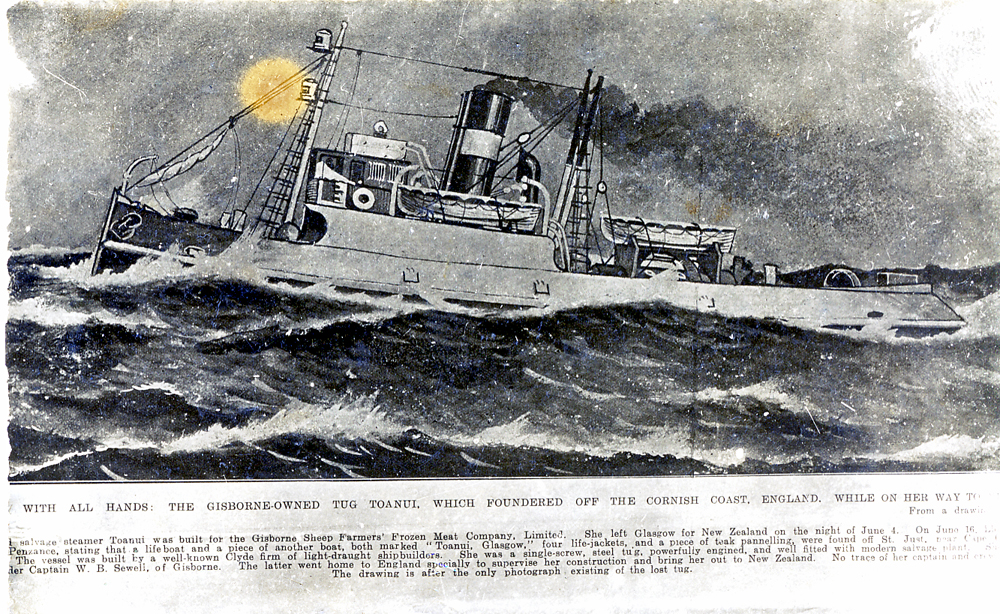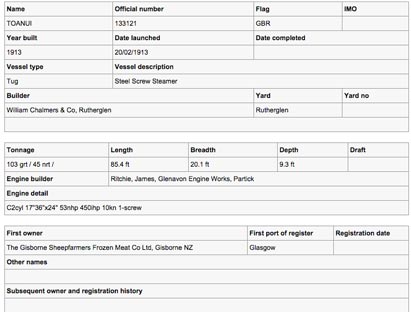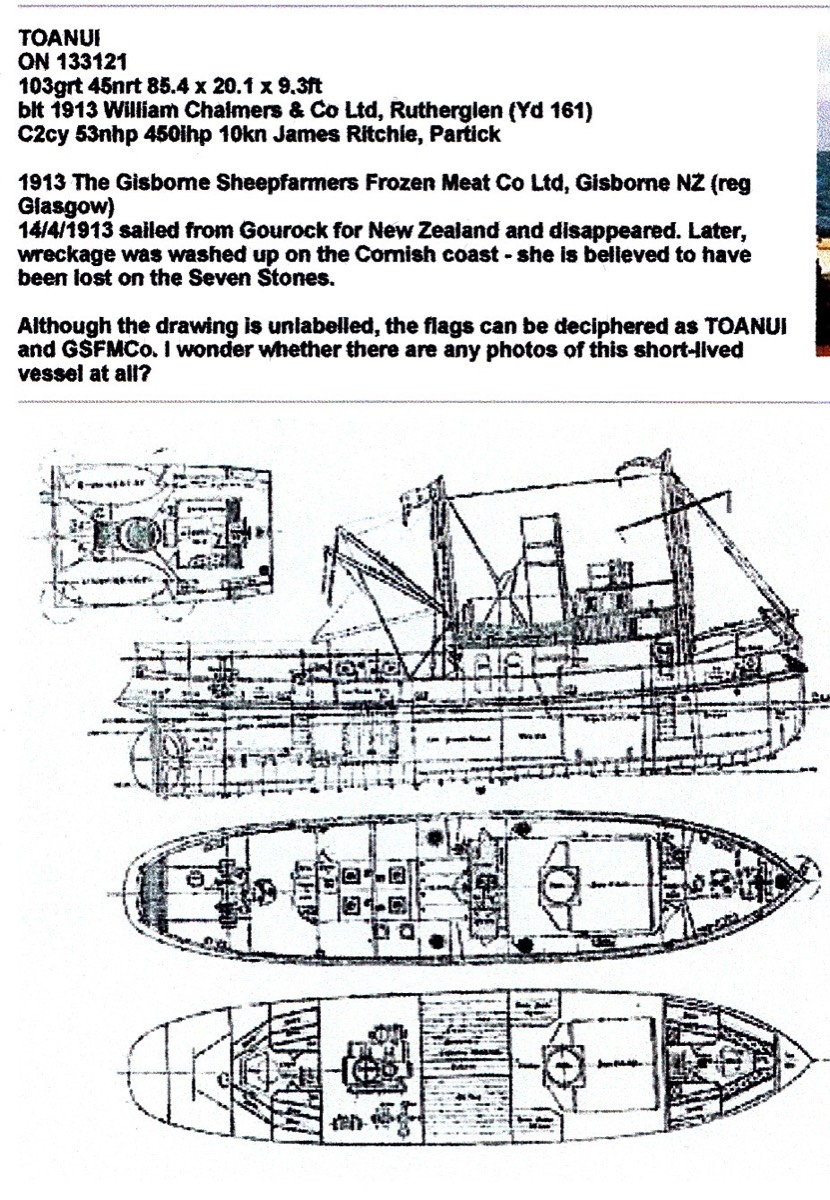

I'd like to share the sad tale of this little tug that had a very short working life: She didn't survive the first day or so of her delivery voyage to New Zealand. Her bones were eventually located on the Scillies.
She was a mystery for a long time and is now largely forgotten. 'Toanui” was ordered by the Gisborne Sheep Farmers cooperative and was intended to be used at the port for general ship handling. She was a nuggetty tug with what looked to be a good off shore capability. The raised boat deck amidships gave under cover ways from the crew’s quarters forward. It also gave shelter to get food forward to them from galley which was in the customary place aft of the boiler casing. She'd have worked well on that coast.
The Gisborne’s own Port captain was sent over to supervise the building and commissioning. He was to accompany her back to NZ. She was duly launched in 1913 and set sail never to be heard of again.
In those days, there were no radios on board of course and it was only when significant wreckage washed ashore that the tragedy was revealed. No crew survived. Regrettably nor have any pictures of the ship herself. Fortunately an artist's impression was published in the day and some profile drawings exist. I have attached them.
I'd love to see any pictures of her when she was launched, but I guess she was too insignificant to attract much attention. Built by William Chalmers & Co. Rutherglen under number 161 and in 1913 delivered as “Toanui”. She sailed on 14 April 1913 from Gourock for New Zealand on her delivery voyage and nothing more was ever heard. She just disappeared with all hands -apparently fooled by the fickle tides in the area. Surely no mechanical failure could have happened. The alarm was only raised when wreckage was washed up on the Cornish Coast. On 11 June 1913 the wreck was reported to have been found on Seven Stones in position 50.00.14N 06.0045W.
She had a length of 95.4 ft and a WL length of 93 ft a beam of 20.1 ft. The Scotch boiler (coal fired of course) and compound engine was built by Ritchie. James, Glenavon Engine Works - Patrick and were 53 nhp and produced 450 indicated horse power. It all looks to be built to the time tried up to date specs of the time.
She would have been a real asset on the East Coast of NZ.
She was a mystery for a long time and is now largely forgotten. 'Toanui” was ordered by the Gisborne Sheep Farmers cooperative and was intended to be used at the port for general ship handling. She was a nuggetty tug with what looked to be a good off shore capability. The raised boat deck amidships gave under cover ways from the crew’s quarters forward. It also gave shelter to get food forward to them from galley which was in the customary place aft of the boiler casing. She'd have worked well on that coast.
The Gisborne’s own Port captain was sent over to supervise the building and commissioning. He was to accompany her back to NZ. She was duly launched in 1913 and set sail never to be heard of again.
In those days, there were no radios on board of course and it was only when significant wreckage washed ashore that the tragedy was revealed. No crew survived. Regrettably nor have any pictures of the ship herself. Fortunately an artist's impression was published in the day and some profile drawings exist. I have attached them.
I'd love to see any pictures of her when she was launched, but I guess she was too insignificant to attract much attention. Built by William Chalmers & Co. Rutherglen under number 161 and in 1913 delivered as “Toanui”. She sailed on 14 April 1913 from Gourock for New Zealand on her delivery voyage and nothing more was ever heard. She just disappeared with all hands -apparently fooled by the fickle tides in the area. Surely no mechanical failure could have happened. The alarm was only raised when wreckage was washed up on the Cornish Coast. On 11 June 1913 the wreck was reported to have been found on Seven Stones in position 50.00.14N 06.0045W.
She had a length of 95.4 ft and a WL length of 93 ft a beam of 20.1 ft. The Scotch boiler (coal fired of course) and compound engine was built by Ritchie. James, Glenavon Engine Works - Patrick and were 53 nhp and produced 450 indicated horse power. It all looks to be built to the time tried up to date specs of the time.
She would have been a real asset on the East Coast of NZ.
